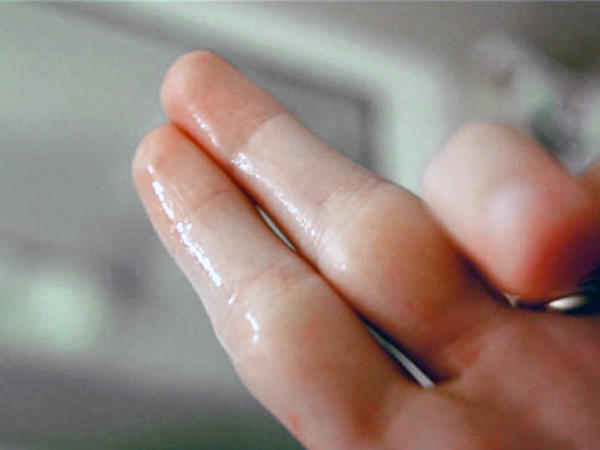One of the most confusing aspects of the menstrual cycle versus early pregnancy can be the differences in vaginal discharge. Both periods and conception can cause changes in cervical mucus amount, texture, and coloring. In this post, we will see the key signs that can help you identify whether the discharge you’re experiencing is related to an impending period or could potentially indicate pregnancy.

We’ll compare the characteristics of normal menstrual discharge to the telltale signs of conception and implantation discharge.
Discharge Before Period vs Early Pregnancy
Understanding the differences between discharge before a period and discharge in early pregnancy can help women identify potential signs of pregnancy or understand their menstrual cycle better. Here are 10 detailed differences that can help distinguish between the two:
Contents
- 0.1 1. Timing
- 0.2 2. Color
- 0.3 3. Consistency
- 0.4 4. Volume
- 0.5 5. Associated Symptoms
- 0.6 6. Duration
- 0.7 7. Smell
- 0.8 8. Hormonal Changes
- 0.9 9. Irritation or Itching
- 0.10 10. Need for Protection
- 1 Frequently Asked Questions
- 1.1 What are the characteristics of pre-period discharge?
- 1.2 How can I differentiate pre-period discharge from early pregnancy discharge?
- 1.3 What are the symptoms that can help distinguish between pre-period discharge and early pregnancy discharge?
- 1.4 How reliable is discharge in predicting pregnancy?
- 1.5 Can changes in vaginal discharge be a potential indicator of early pregnancy?
1. Timing
Discharge Before Period: This discharge appears in the latter half of the menstrual cycle, leading up to menstruation. It’s part of the body’s natural preparation for the potential shedding of the uterine lining, reflecting hormonal changes that occur before a period begins.
Early Pregnancy Discharge: Noticed around the time a period is due but after conception has occurred, early pregnancy discharge continues as the body adapts to pregnancy. It’s an early sign as the body begins to create a conducive environment for the developing embryo.
2. Color
Discharge Before Period: Varies from clear to white or light yellow. The color and consistency changes are influenced by hormonal fluctuations throughout the menstrual cycle, with the discharge becoming thicker and cloudier as the period approaches.
Early Pregnancy Discharge: Typically white or pale yellow, leukorrhea is a thin, mild-smelling discharge that’s common in early pregnancy. Its presence is one of the many physiological changes the body undergoes to support pregnancy.
3. Consistency
Discharge Before Period: Can be sticky, tacky, or thick, reflecting the body’s hormonal state leading up to menstruation. This change in consistency is part of the natural cycle and helps to indicate where a woman is in her cycle.
Early Pregnancy Discharge: It is generally thin and possibly more abundant. This consistency helps to form a protective barrier in the cervix, which plays a crucial role in maintaining a healthy pregnancy environment.

4. Volume
Discharge Before Period: The amount tends to decrease right before the period starts, as the body prepares for the shedding of the uterine lining, marking the beginning of menstruation.
Early Pregnancy Discharge: There’s an increase in discharge volume due to heightened estrogen levels and increased blood flow to the vaginal area, which are physiological responses to pregnancy.
5. Associated Symptoms
Discharge Before Period: Often comes with PMS symptoms such as bloating, mood swings, and breast tenderness. These symptoms are indicators of the impending menstrual period.
Early Pregnancy Discharge: May occur alongside early pregnancy symptoms like nausea, missed periods, and frequent urination, helping to differentiate it from pre-period discharge.
6. Duration
Discharge Before Period: Ceases as menstruation begins, with menstrual blood flow taking its place. This marks the start of a new menstrual cycle.
Early Pregnancy Discharge: Persists throughout pregnancy, adapting as the body undergoes various changes to support fetal development and protect against infections.
7. Smell
Discharge Before Period: May have a mild odor due to the vagina’s acidic environment but shouldn’t be strong or unpleasant, which could indicate an infection.

Early Pregnancy Discharge: Usually odorless or very mild in smell. A strong or foul odor during pregnancy can be a sign of infection and warrants a medical consultation.
8. Hormonal Changes
Discharge Before Period: The appearance and consistency changes in discharge are driven by the cyclical decrease in progesterone and estrogen levels before menstruation.
Early Pregnancy Discharge: Increased levels of estrogen and the development of the mucus plug are hormonal responses to pregnancy, leading to changes in discharge.
9. Irritation or Itching
Discharge Before Period: Rarely causes discomfort unless accompanied by a condition such as a yeast infection, which can alter discharge properties.

Early Pregnancy Discharge: Should not lead to significant itching or irritation. Experiencing these symptoms could indicate a vaginal infection requiring medical attention.
10. Need for Protection
Discharge Before Period: May not necessitate the use of panty liners unless the discharge is unusually heavy or for personal comfort preferences.
Early Pregnancy Discharge: The increased volume may lead some women to use panty liners to maintain comfort and hygiene throughout the day.
Frequently Asked Questions
What are the characteristics of pre-period discharge?
Pre-period discharge can vary in consistency and color due to hormonal changes. It may be white, creamy, or sticky with a moderate amount that is normal for the individual. It can also be pinkish or brownish in color, indicating the presence of older blood mixed with cervical mucus.
How can I differentiate pre-period discharge from early pregnancy discharge?
Pre-period discharge tends to be more consistent with your regular vaginal secretions in terms of color, texture, and smell. In contrast, early pregnancy discharge is usually thin, clear, and milky white, resembling raw egg whites, and is caused by hormonal changes associated with pregnancy.
What are the symptoms that can help distinguish between pre-period discharge and early pregnancy discharge?
Common symptoms accompanying pre-period discharge include mild cramping, mood changes, breast tenderness, and bloating. On the other hand, early pregnancy discharge may be accompanied by symptoms like nausea, breast changes, fatigue, and a missed period, indicating a higher likelihood of pregnancy.
How reliable is discharge in predicting pregnancy?
While changes in discharge consistency and amount can occur in early pregnancy, relying solely on discharge as a predictor of pregnancy may not be accurate for all individuals. Other symptoms and confirmatory tests, such as home pregnancy tests detecting hCG in urine, play a more definitive role in confirming pregnancy.
Can changes in vaginal discharge be a potential indicator of early pregnancy?
Changes in vaginal discharge, while possible indicators of early pregnancy, are not always definitive signs of conception. Increase in cervical mucus production and subtle changes in its consistency may occur, but monitoring other symptoms and undergoing pregnancy tests remain crucial for confirming pregnancy.
I am a medical student with experience and interest in Women’s health and well-being.